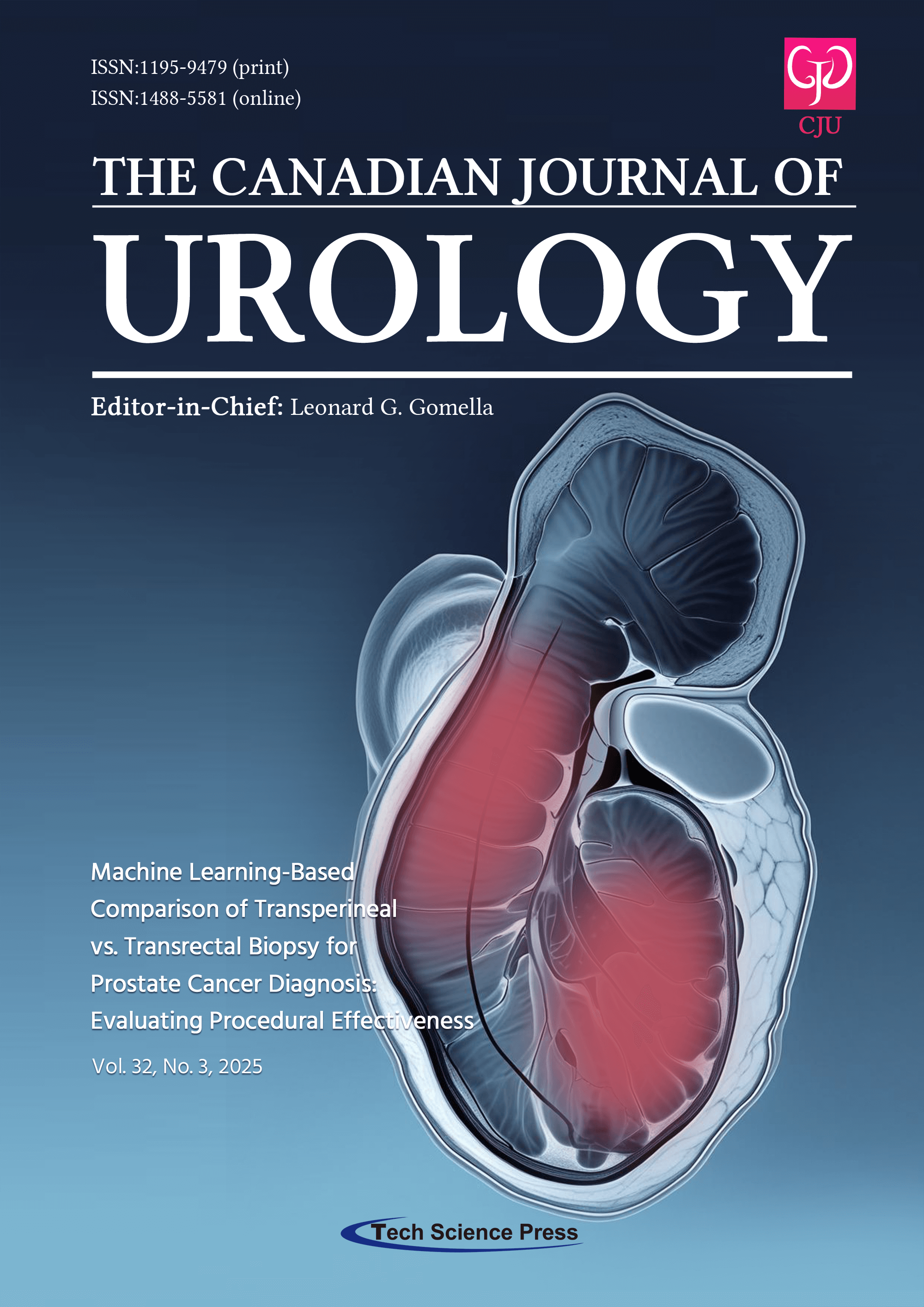Quality of life and surgical treatment regret in patients with benign prostatic hypertrophy: a multicenter study
Joshua Winograd1,#, Rebecca Kindler2,#, Cassidy Lleras2, Alia Codelia-Anjum3, Naeem Bhojani4, Dean Elterman5, Michael A. Diefenbach3, Daniel Ufearo2, Katharine Kechejian2, Siri Drangsholt2, Bilal Chughtai3,*
Canadian Journal of Urology, Vol.32, No.3, pp. 219-227, 2025, DOI:10.32604/cju.2025.064404
- 27 June 2025
Abstract Introduction: Benign prostatic hypertrophy (BPH) is a common condition affecting men later in life, significantly impacting quality of life (QOL). Surgical intervention is often pursued when medical management fails, but patient satisfaction with outcomes varies. Decisional regret can affect perceived success and patient satisfaction post-surgery. This study evaluates the relationship between post-surgical symptoms and decisional regret across BPH procedures. Methods: A prospective, multicenter cohort study included 54 patients undergoing BPH surgery between March 2023 and February 2024. Patients completed the International Prostate Symptom Score-QOL (IPSS-QOL) scale preoperatively and at least three months postoperatively, along with… More >
